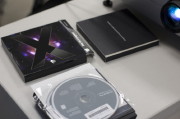 In recent years, I have been asked to introduce Macs and OS X to Computer Engineering students. For a couple of years I also taught a basic introduction to Unix with some Silicon Graphics computers that were under-utilised. Fortunately, the arrival of a new teacher a couple of years ago, meant that the students had a complete introduction to Linux, with hands-on experience.
In recent years, I have been asked to introduce Macs and OS X to Computer Engineering students. For a couple of years I also taught a basic introduction to Unix with some Silicon Graphics computers that were under-utilised. Fortunately, the arrival of a new teacher a couple of years ago, meant that the students had a complete introduction to Linux, with hands-on experience.
Usually, I have a three weeks in the first semester: enough to outline OS X and highlight some differences. This year I was asked to teach again in semester two. I decided to show them some of what happens when things go wrong: destructive computing. Some students may work in businesses where there are Macs. They need to have a passing knowledge of other systems.
In semester one, I use my own computer and have several videos and presentations available. It is my working machine, so the idea of deleting and unnecessarily re-installing the operating system made me uncomfortable. No suitable machines are available. I told the department head: if you want me to teach this, I need hardware.
Personal use of Macs -- students and staff -- at the Engineering Faculty and elsewhere at the university has increased considerably. I am no longer the voice in the wilderness. The problem is budget allocation: difficult to overcome. I borrowed a MacBook Pro from EITS, the Apple Education distributor.
 We began the sessions with security and the need for strong passwords. John Markoff writes in the New York Times that web criminals are hitting an estimated $100 billion annually, but that, "For now . . . Macintosh . . . are more or less exempt from the attacks. . . ." Many Mac users does not mean many Mac problems: for example, with over 10% of the market worldwide now (more in the US), there are not 10% of the viruses. There are none, despite OS X being the Holy Grail of virus writers. Properly set up Mac systems are usually more secure than other platforms.
We began the sessions with security and the need for strong passwords. John Markoff writes in the New York Times that web criminals are hitting an estimated $100 billion annually, but that, "For now . . . Macintosh . . . are more or less exempt from the attacks. . . ." Many Mac users does not mean many Mac problems: for example, with over 10% of the market worldwide now (more in the US), there are not 10% of the viruses. There are none, despite OS X being the Holy Grail of virus writers. Properly set up Mac systems are usually more secure than other platforms.
I suggested that day to day work is best done in a user account, leaving the Admin account for maintenance. A test account for comparison purposes is also useful, as is an account for any guest users.
It is unfortunately easy to break into many Macs as the users rely on basic passwords (some just use the Enter key) and the automatic login. It is also easy to lock the Mac up in such a way that it is almost totally secure.
 A further strong point is that, unlike Unix and Linux, the Root user (from which total control of the computer is possible) does not have a password and is not an active account: Root activities are done using a special process in the Admin account. If you do not have a Root password, the Root password cannot be guessed by someone trying to break in. [This also helps prevent unauthorised installation of applications and malware.]
A further strong point is that, unlike Unix and Linux, the Root user (from which total control of the computer is possible) does not have a password and is not an active account: Root activities are done using a special process in the Admin account. If you do not have a Root password, the Root password cannot be guessed by someone trying to break in. [This also helps prevent unauthorised installation of applications and malware.]
Problems do occur with Macs, although they are not common for most users. Some are related to hardware incompatibilities (such as bad RAM), some to software, and some to a combination of the two. Most problems, however, are down to human error, such as deleting or moving essential files or parts of the operating system.
One serious manifestation of such problems may be what is called a Kernel Panic (KP): the last one I saw was two years ago when working with a video file and trying to apply an effect that I later found to be corrupt. A series of KPs needs analysis and I showed the students the Activity Monitor and Console. The former shows all processes running, while the latter has all logs: an examination focussing on the time of the problem may reveal the cause.
While it is not usually possible to call up a KP on demand, I did have some software that demonstrates what one looks like: it is eerie to see the screen change and the multi-language screen appear indicating a problem. All I needed to do in this case was to quit the utility.

The students needed to see how to erase a disk, how to partition and then reinstall the operating system from scratch: there are several differences to their Windows-only experience. I also showed options available when installing, particularly removing language localisations and adding extras like the X11 window.
 Finally, we looked at getting back up to speed. With Time Machine, it is possible to recover deleted files or some applications. We also considered the traumatic events of a crashed hard disk or a stolen computer. Having backed up my own Mac in the morning, I started the EITS computer with the install disk, selected the language and then accessed the utility menu. The bottom item allows a user to restore the installation from a Time Machine backup disk. About an hour after setting this running, the Mac restarted and looked identical to my own computer alongside, with accounts, applications and data all restored.
Finally, we looked at getting back up to speed. With Time Machine, it is possible to recover deleted files or some applications. We also considered the traumatic events of a crashed hard disk or a stolen computer. Having backed up my own Mac in the morning, I started the EITS computer with the install disk, selected the language and then accessed the utility menu. The bottom item allows a user to restore the installation from a Time Machine backup disk. About an hour after setting this running, the Mac restarted and looked identical to my own computer alongside, with accounts, applications and data all restored.
|


 In recent years, I have been asked to introduce Macs and OS X to Computer Engineering students. For a couple of years I also taught a basic introduction to Unix with some Silicon Graphics computers that were under-utilised. Fortunately, the arrival of a new teacher a couple of years ago, meant that the students had a complete introduction to Linux, with hands-on experience.
In recent years, I have been asked to introduce Macs and OS X to Computer Engineering students. For a couple of years I also taught a basic introduction to Unix with some Silicon Graphics computers that were under-utilised. Fortunately, the arrival of a new teacher a couple of years ago, meant that the students had a complete introduction to Linux, with hands-on experience. We began the sessions with security and the need for strong passwords. John Markoff writes in the New York Times that web criminals are hitting an estimated $100 billion annually, but that, "For now . . . Macintosh . . . are more or less exempt from the attacks. . . ." Many Mac users does not mean many Mac problems: for example, with over 10% of the market worldwide now (more in the US), there are not 10% of the viruses. There are none, despite OS X being the Holy Grail of virus writers. Properly set up Mac systems are usually more secure than other platforms.
We began the sessions with security and the need for strong passwords. John Markoff writes in the New York Times that web criminals are hitting an estimated $100 billion annually, but that, "For now . . . Macintosh . . . are more or less exempt from the attacks. . . ." Many Mac users does not mean many Mac problems: for example, with over 10% of the market worldwide now (more in the US), there are not 10% of the viruses. There are none, despite OS X being the Holy Grail of virus writers. Properly set up Mac systems are usually more secure than other platforms. A further strong point is that, unlike Unix and Linux, the Root user (from which total control of the computer is possible) does not have a password and is not an active account: Root activities are done using a special process in the Admin account. If you do not have a Root password, the Root password cannot be guessed by someone trying to break in. [This also helps prevent unauthorised installation of applications and malware.]
A further strong point is that, unlike Unix and Linux, the Root user (from which total control of the computer is possible) does not have a password and is not an active account: Root activities are done using a special process in the Admin account. If you do not have a Root password, the Root password cannot be guessed by someone trying to break in. [This also helps prevent unauthorised installation of applications and malware.] Finally, we looked at getting back up to speed. With Time Machine, it is possible to recover deleted files or some applications. We also considered the traumatic events of a crashed hard disk or a stolen computer. Having backed up my own Mac in the morning, I started the EITS computer with the install disk, selected the language and then accessed the utility menu. The bottom item allows a user to restore the installation from a Time Machine backup disk. About an hour after setting this running, the Mac restarted and looked identical to my own computer alongside, with accounts, applications and data all restored.
Finally, we looked at getting back up to speed. With Time Machine, it is possible to recover deleted files or some applications. We also considered the traumatic events of a crashed hard disk or a stolen computer. Having backed up my own Mac in the morning, I started the EITS computer with the install disk, selected the language and then accessed the utility menu. The bottom item allows a user to restore the installation from a Time Machine backup disk. About an hour after setting this running, the Mac restarted and looked identical to my own computer alongside, with accounts, applications and data all restored.